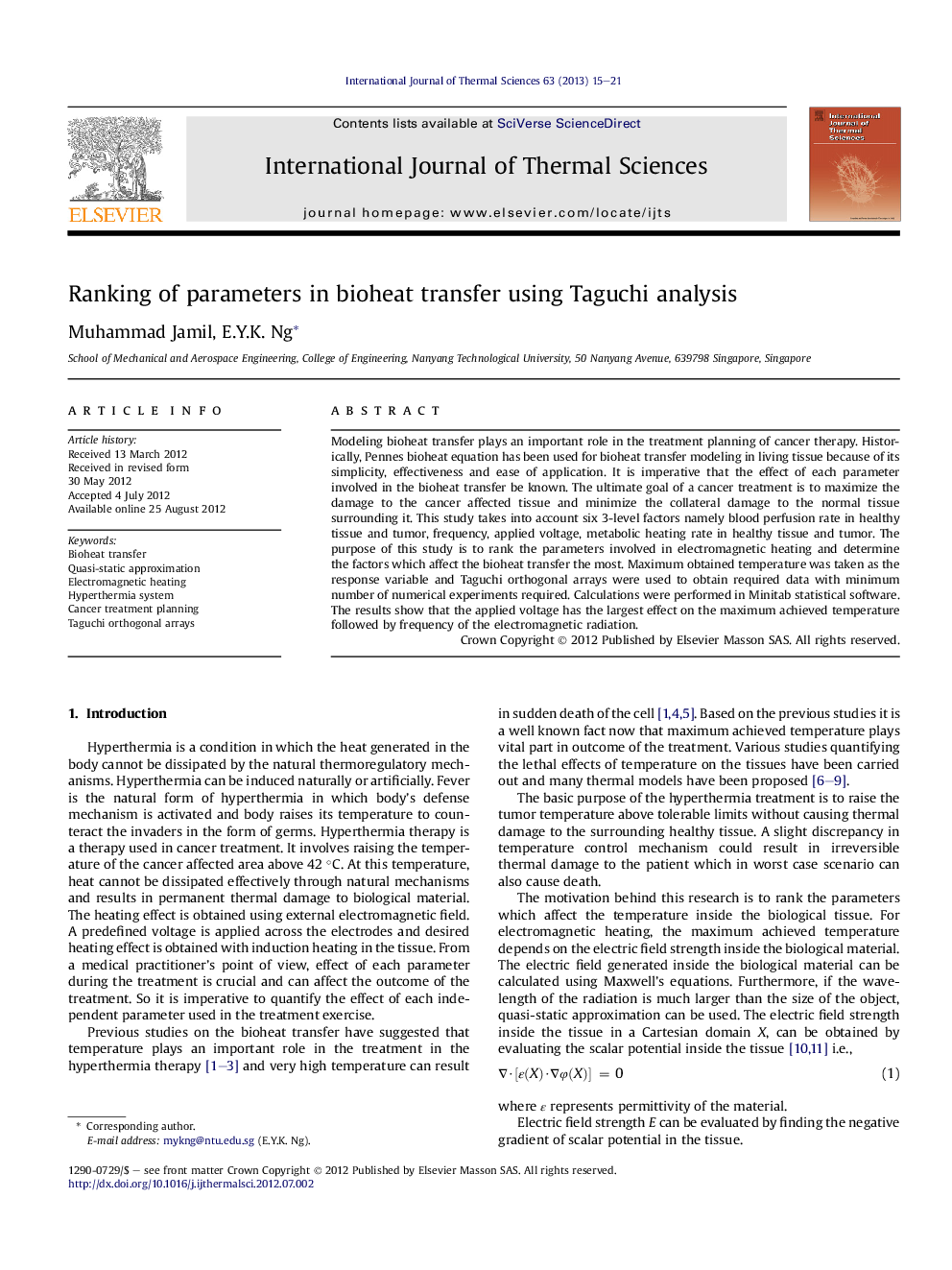| Article ID | Journal | Published Year | Pages | File Type |
|---|---|---|---|---|
| 669897 | International Journal of Thermal Sciences | 2013 | 7 Pages |
Modeling bioheat transfer plays an important role in the treatment planning of cancer therapy. Historically, Pennes bioheat equation has been used for bioheat transfer modeling in living tissue because of its simplicity, effectiveness and ease of application. It is imperative that the effect of each parameter involved in the bioheat transfer be known. The ultimate goal of a cancer treatment is to maximize the damage to the cancer affected tissue and minimize the collateral damage to the normal tissue surrounding it. This study takes into account six 3-level factors namely blood perfusion rate in healthy tissue and tumor, frequency, applied voltage, metabolic heating rate in healthy tissue and tumor. The purpose of this study is to rank the parameters involved in electromagnetic heating and determine the factors which affect the bioheat transfer the most. Maximum obtained temperature was taken as the response variable and Taguchi orthogonal arrays were used to obtain required data with minimum number of numerical experiments required. Calculations were performed in Minitab statistical software. The results show that the applied voltage has the largest effect on the maximum achieved temperature followed by frequency of the electromagnetic radiation.
► A typical hyperthermia system used for the treatment of cancer was modeled. ► Taguchi's experimental design was used to rank the parameters in bioheat transfer. ► Maximum achieved temperature in the body was used as the characteristic parameter. ► Applied voltage and frequency respectively affect the response the most.
